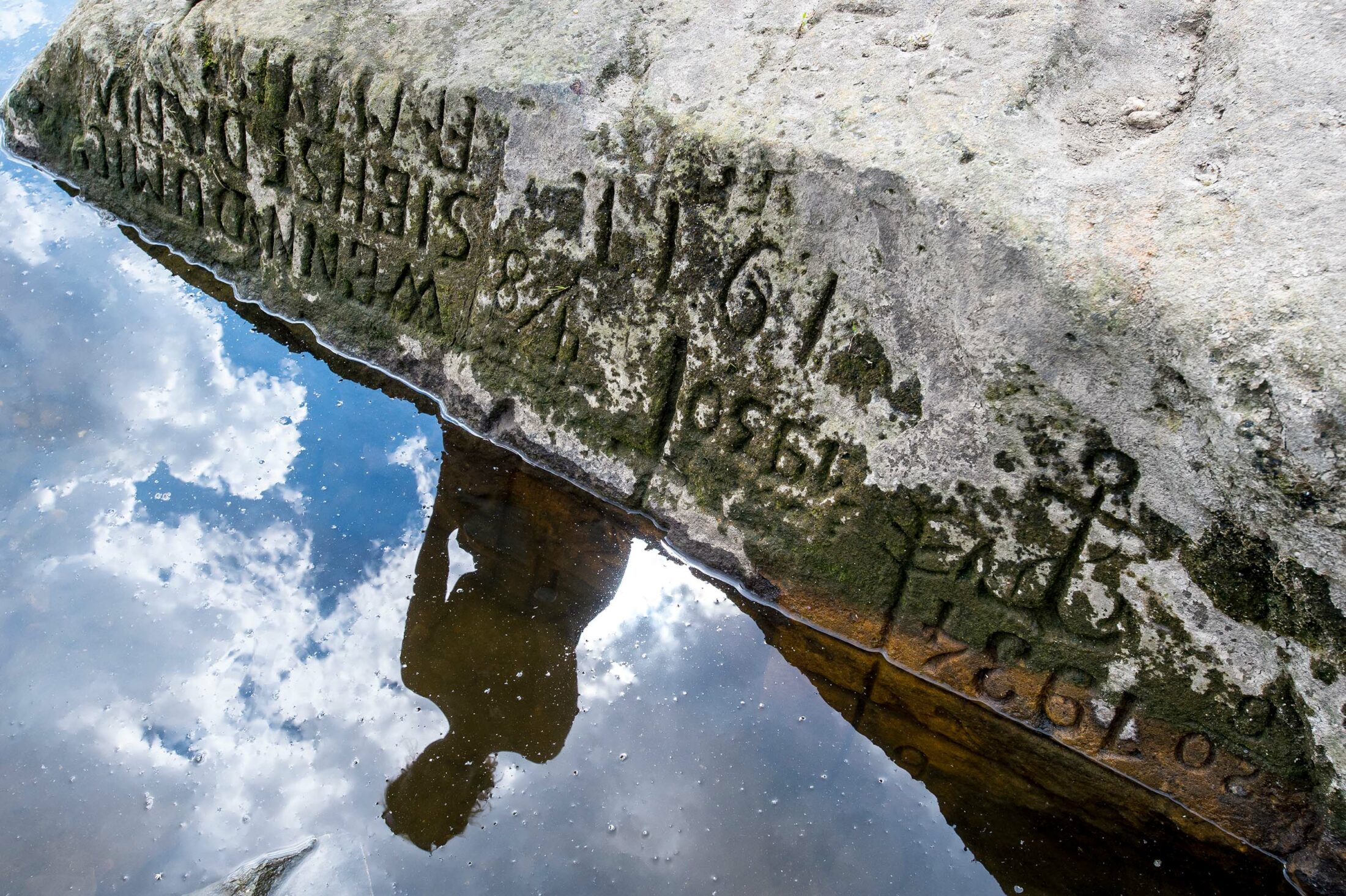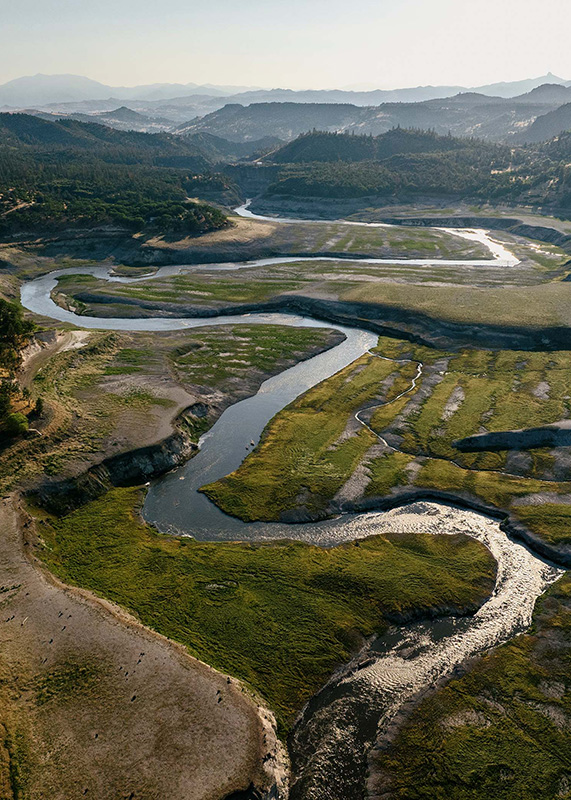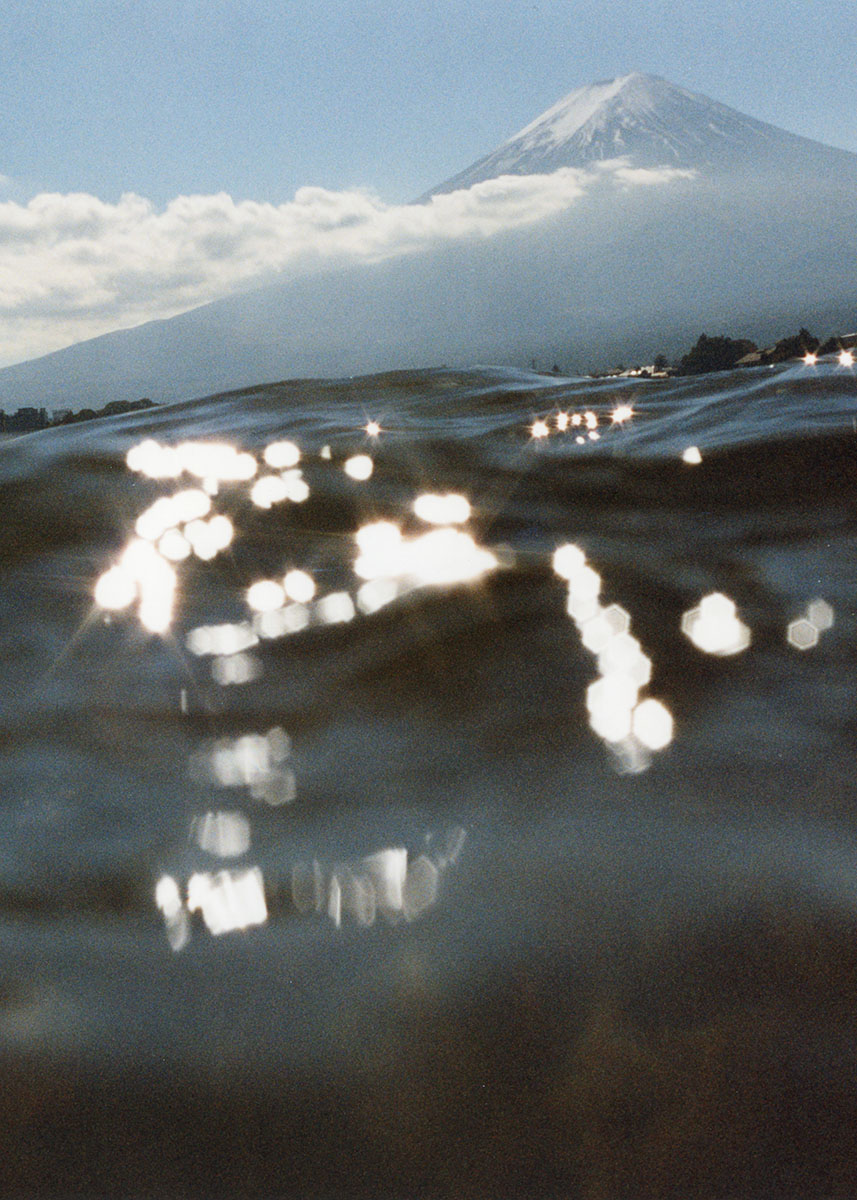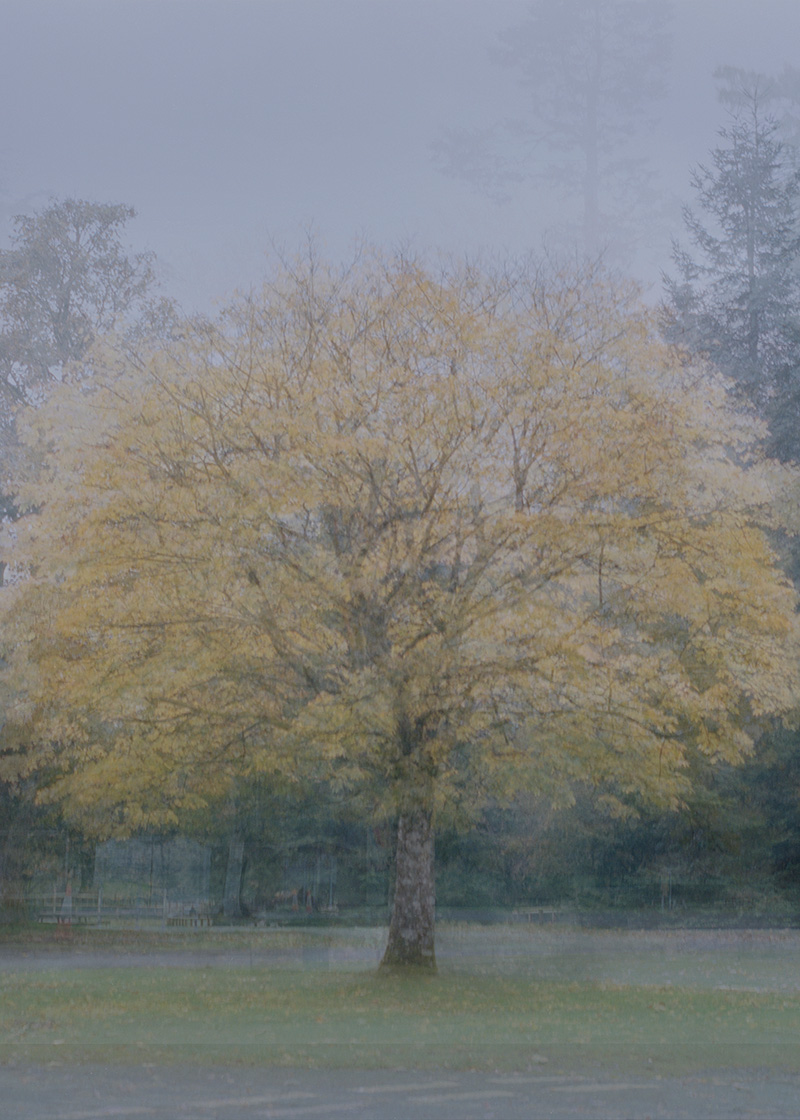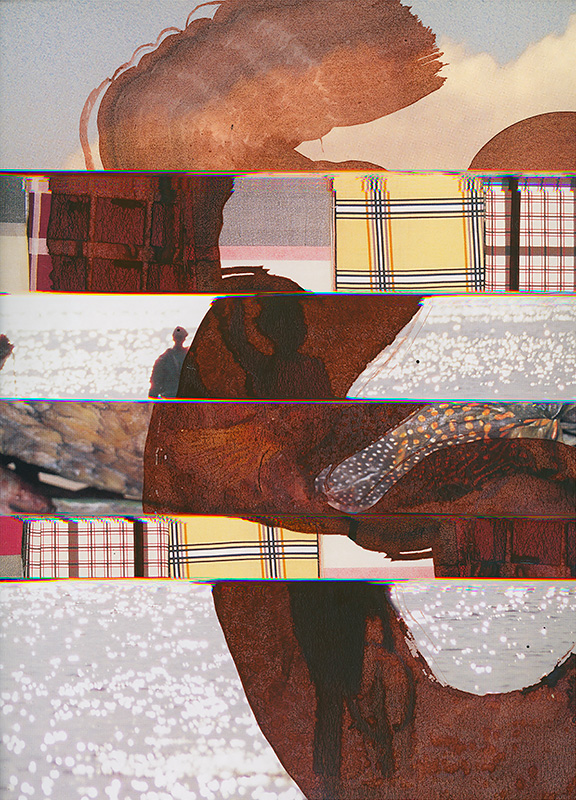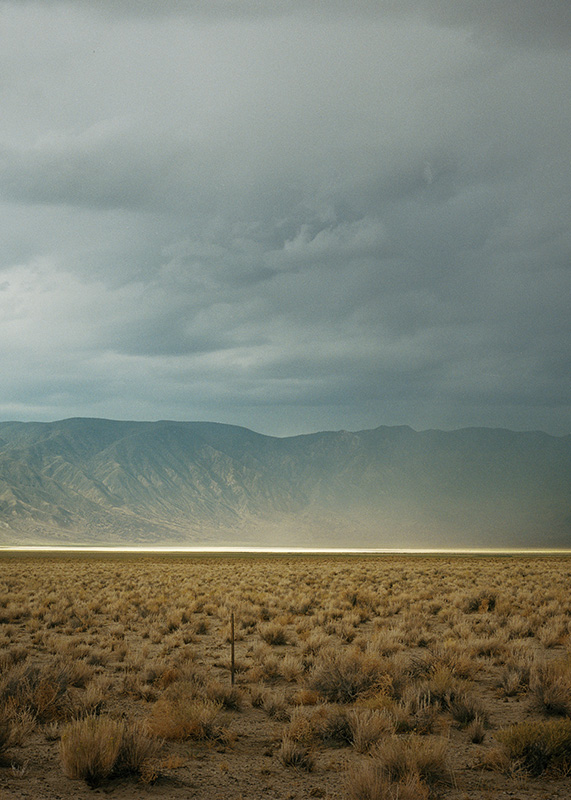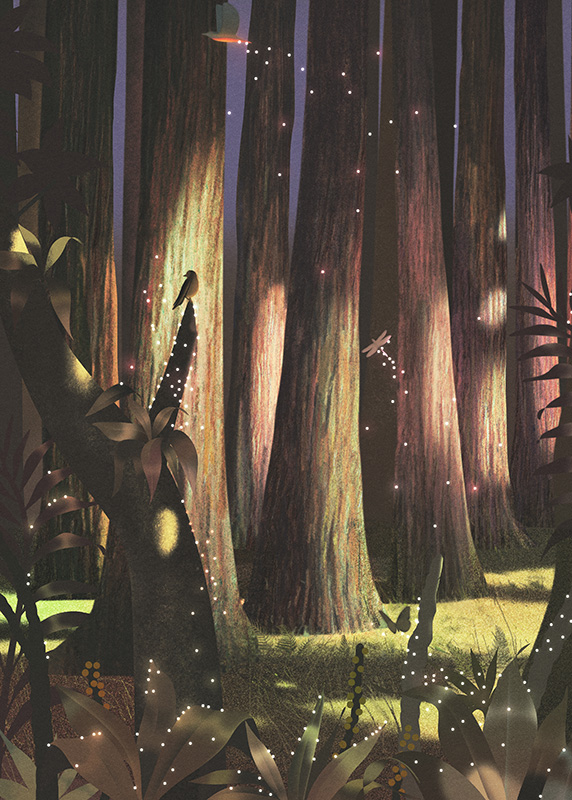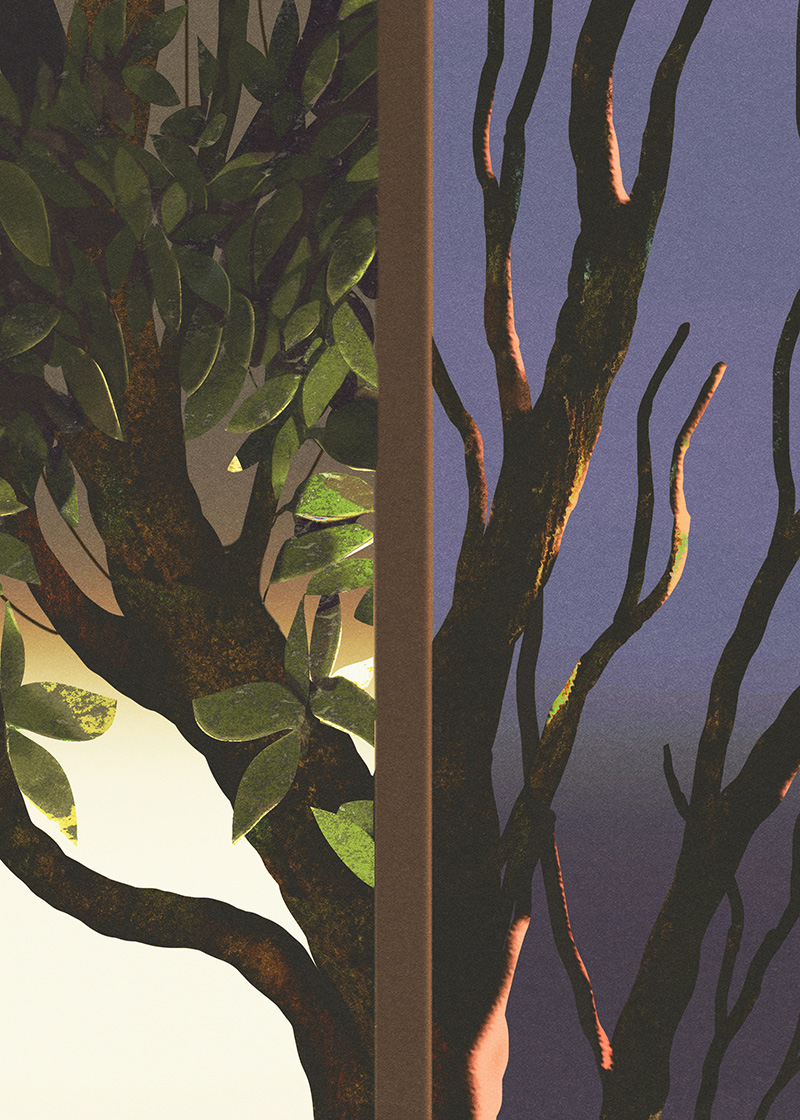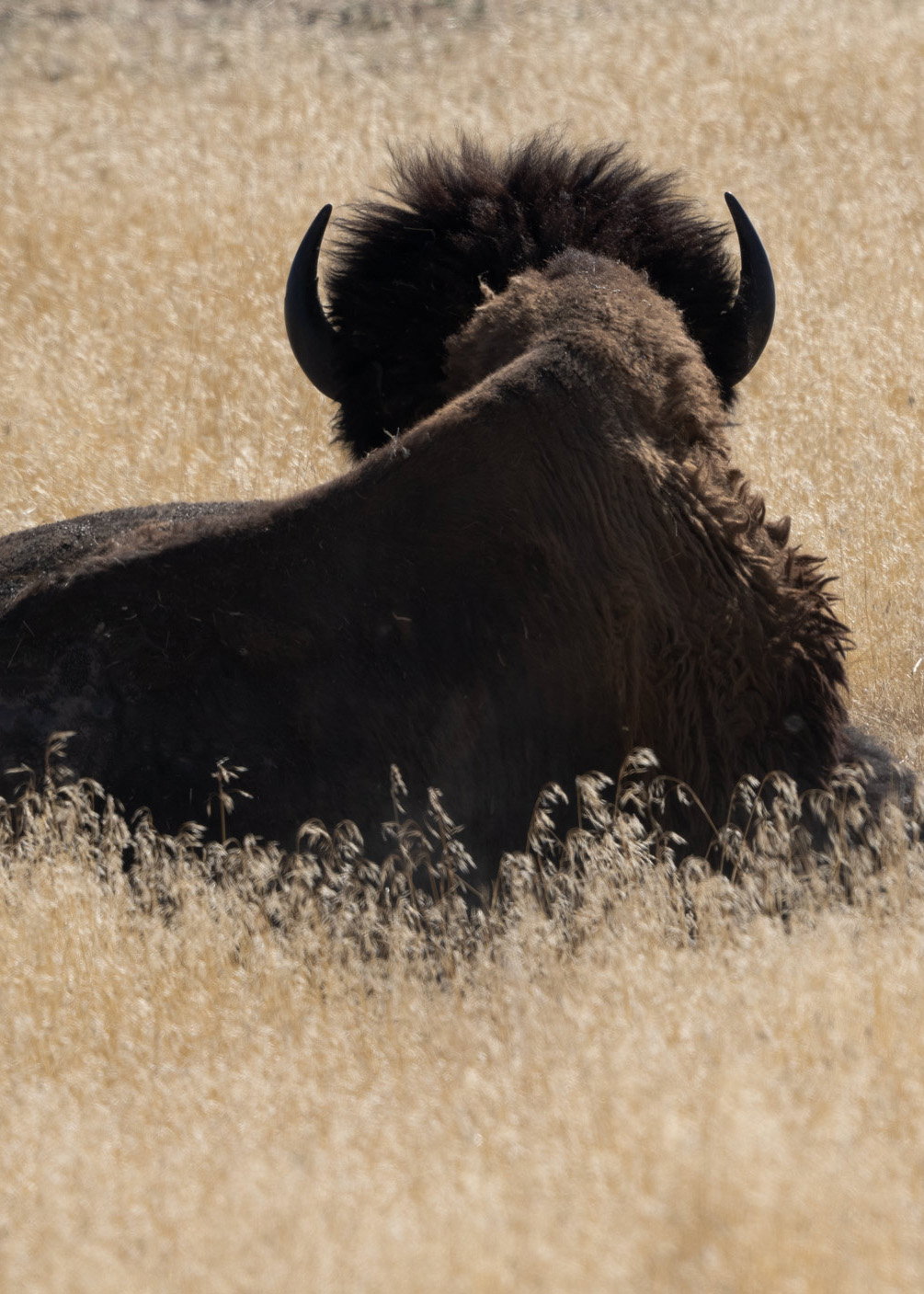
Anna Badkhen is the author of seven books, most recently Bright Unbearable Reality, which was longlisted for the 2022 National Book Award and for the 2023 Jan Michalski Prize for Literature. Her awards include the Guggenheim Fellowship, the Barry Lopez Visiting Writer in Ethics and Community Fellowship, and the Joel R. Seldin Award from Psychologists for Social Responsibility for writing about civilians in war zones. Her essays have appeared in New York Review of Books, Granta, Harper’s, The Paris Review, Orion, and The New York Times. Anna was born in the Soviet Union and is a US citizen.
Contemplating relics of environmental catastrophe from the near and distant past, Anna Badkhen speaks to our present human story of despair, grief, and hope. As the Earth endures great change, she wonders: What markers will we leave behind?
Listen to Things
More than to Beings
Hear the Voice of Fire
Hear the Voice of Water.
Listen in the Wind
To the sobs of the Bush:
It is the ancestors’ Breath.
—Birago Diop
1.
My great-uncle and his wife had no children of their own, and sometimes, when I was little, I would spend the night at their place. Uncle Lyonya indulged my babblings, and Auntie Anya baked me sweet and savory pies and let me play with her collection of Baltic amber necklaces: sun-warmed souvenirs of her annual summer migration from a featureless postwar high-rise in Leningrad to Latvia’s seashore splendor. I was in awe of these fossilized bits of tree sap, how they trapped Eocene debris and dehydrated mosquitoes and forty-four-million-year-old bubbles of air weighted with greenhouse gasses. I worried them like prayer beads. Each bead was a memento from a time when much of Europe and Central Asia were underwater and no ice capped the poles of the Earth, each necklace an abacus of planetary memories that I was still too young to compute into a warning. Because of its soft warm feel and because of the insects it sometimes captured, I always suspected that amber was more living matter than gemstone. Even now it seems to me almost sentient, only a wandflick away from being able to speak and tell us all it knows—advents and vanishings of plants and animals, human and nonhuman, and of water, and of land, and even of the soil and rock that make up land: it could remind us that even terra firma is impermanent, that it, too, can migrate.
2.
Four billion years ago, a multimillion-year downpour rained an ocean that submerged the whole of Hadean Earth. After the ocean receded, for almost a hundred million years the Marfa Plateau in what we today call the Chihuahuan Desert remained underwater: this desert is the exposed bottom of a vanished sea, the Delaware. Where the rare stratocumuli now float used to be the water’s surface. To the northeast, a buildup of reef and limestone from two hundred and sixty million years ago holds petrified remains of marine creatures, souvenirs of the greatest flood in history. Souvenir: the French for “to remember,” from the Latin subvenire—literally, “to come from below.”
Many years after Auntie Anya and Uncle Lyonya died, I lived for several months on the bottom of the Delaware Sea, which people now call the Delaware Basin. Almost every day I wondered: What was it like after that cloud cover thinned, lifted, and the sun shone upon the water for the very first time? And later, when water levels dropped, tectonics shifted, reefs grew, and the ice age locked away the planet’s water supplies into glaciers, and new faults thrust the land skyward to dry? When I imagine all that geologic tumult, I understand what legal documents intend when they mention “acts of God.”
These cataclysms locked inside the Delaware Basin more than 46 billion barrels of technically recoverable crude oil, and 281 trillion cubic feet of natural gas. It is the largest documented deposit in the United States—and one of the largest in the world—of fossil fuels, whose extraction and burning precipitates modern-day floods and droughts and tremblors and other anthropogenic climate catastrophes worldwide. Fossil fuels are anaerobically decomposed life forms from the planet’s past, which means they are souvenirs, too. In the Delaware Basin, they are also like magic wands: they let man play God. And he does. He takes the buried remnants of primordial calamities and uses them to drown his own future, famish the planet with droughts, make the earth quake.
3.
The seas are rising, the icebergs are melting, Siberia is ablaze, a third of Pakistan is underwater, heatstruck birds are falling out of the sky in India, a record-setting heatwave has shrunk the Yangtze River to a record low. In Europe, rivers running dry after yet another heatwave are once again revealing mementoes left behind by sufferers of historic droughts past. In Central Europe, hunger stones—river boulders that people living through droughts petroglyphed with dates and descriptions of their woe—commemorate the years of bad harvest, scarcity, high prices, hunger: 1417, 1616, 1707, 1746, 1790, 1800, 1811, 1830, 1842, 1868, 1892, 1893. One inscription, near Bleckede, in Lower Saxony, reads: “When this goes under, life will become more colorful again”; another, near the Czech town of Děčín-Podmokly: “If you see me, then weep.” On the same boulder, someone else later chiseled: “Don’t cry girl, when the field is dry, water it.” Many of the hunger stones on the Elbe River surfaced for the first time in many years in the summer of 2018, when Greenpeace, too, left a message on a boulder near Magdeburg: “If you see me, it’s climate crisis. August 2018.”
What other markers will we leave behind? It is hard at times to think beyond scorched forests and submerged farmlands, almost one-fifth of our planet unlivable for humans, the predicted mass die-off of at least a million species, disintegrating factories and mines leeching poison into soil, the Great Pacific Garbage Patch. In my mind, I try to tell my private beads of our aspirations: the ethereal Afrofuturism of Diébédo Francis Kéré’s architecture; the James Webb Space Telescope and the Large Hadron Collider; the artist Katie Paterson’s engagements with deep time and space; the unflinching bronzes of Simone Leigh; biomedical research advances that will help save hundreds of millions, maybe billions, of lives; Carlo Rovelli’s playful physics; Alice Coltrane and Ablaye Cissoko; Wole Soyinka; Jay Wright…
4.
Once, I traveled to the fossil fields of Afar, where our prehuman ancestors became human, to puzzle out what we leave behind. I sat on a dry hummock outside the village of Herto Bouri, in the Great Rift Valley, the chalky tuff around me full of the petrified remains of ancestors and their stone hand axes. What did that earth remember, that patch of Pleistocene dirt? The distance between us and our proto-ancestors appeared to me unimaginable. How, by what act of will and ambition and hope and desire, did we get from there to here? How will we—or will we?—get to the other side?
Ahmed Elema, my host in Afar, pulled me out of my reverie. Ahmed Elema describes himself as a fossil hunter. His career in paleoanthropology began in the nineties, when he helped discover near Herto Bouri three crania of some of the oldest-known direct ancestors of modern humans, Homo sapiens idaltu, known commonly as the Herto Man; when we met, he worked at a fossil laboratory in the National Museum of Ethiopia in Addis-Ababa. For our outing, he wore a blue baseball cap screen-printed with the logo of a paleoanthropological research project that featured the silhouette of possibly the oldest discovered unequivocal human ancestor, the 3.8-million-year-old Australopithecus anamensis scientists named MRD-VP-1/1—MRD for short—though my guide called him by his Afar name, Kadanuumuu, Big Man. He had played a role in that discovery. He was as old as my parents, the eldest of his eight children was my age; he could identify fragments of hominin fossils that range across the Pliocene and the Pleistocene; he was also a balabat, a hereditary Afar clan leader. I addressed him, respectfully, as Uncle. But in my mind I called him Archangel, after Uriel, the cherub who guards the Garden of Eden, the dispenser of knowledge who, in the Hebrew tradition, gave light to the Jews. Uncle Ahmed was an enthusiastic archangel. He glided with ease between Amharic, Afaraf, Arabic, and the often off-color English he had picked up working with foreign scientists. Now he was pacing the dry scrubland, muttering cusswords in English. It was his first visit to the paleoanthropological site in five years, and during that time rain and livestock had remapped the place, combed it with new gullies, rearranged the scientists’ markers, shuffled the ossuary. So much research work, lost. Motherfucker.
5.
The earliest hunger stone marker our contemporaries have seen dates back to 1415, but scientists say they have records of a stone marked with the year 1115, somewhere near Pirna, in the Free State of Saxony. Its location is no longer known. Maybe cycles of rain and drought dislodged it; maybe the Elbe’s current took it under. That any guidepost is reliable is an illusion. Ask the air bubble trapped inside a chunk of amber. Climb 4,800 feet above sea level to touch the ocean floor. Come to Herto Bouri after five cycles of rain.
6.
The word “bead” entered the English language in the mid-fourteenth century as bede, meaning “prayer bead,” from the Proto-Germanic bidam, “entreaty,” itself from the Proto-Indo-European bhedh: “to pray,” “to ask,” “to urge.” This means that the expression “prayer beads” is a tautology, a repetition—which, of course, is the whole premise of a rosary. The oldest known image of prayer beads is believed to be on a 3,600-year-old fresco in the Cycladic Bronze Age settlement of Akrotiri in Thera, Greece; scientists say Hindus probably were the first to use a rosary, called japa mala—literally “garland of prayers”—which consists of 108 beads and represents the cyclicality of life.
But our worry and our supplication precede these known religions; to center ourselves, we probably have been turning to ritual and repetition since time immemorial. Why else would the Herto Man specimens that Elema helped find have had their heads severed from their bodies and scalped? Why had someone polished smooth one of the crania and decorated another with a pattern of scratch marks? Out of such ancient lineage of supplication, these Galway Kinnell lines were born: “Trust the hours. Haven’t they / carried you everywhere, up to now?”
7.
While I was in Afar, looking for mementos of ancestors, Dad emailed me: “In the human remains that have reached us we must look for traces of human reactions—the reactions of living people to disappearing reality.” What was the reaction of the humans who diaried catastrophes on the Elbe’s river rocks seven centuries ago—and in 2018? Despair. Grief. Hope. The same, I imagine, as that of the Herto Man; or of the Homo sapiens who followed twenty-five thousand years later, when East African megadroughts that lasted sixty thousand years put humankind at the brink of extinction, likely precipitating early human dispersal throughout, and out of, Africa; or of all the suppliants worrying their rosaries all over the planet. The same despair and grief and hope as that of our contemporary artists and thinkers whose work may or may not outlive the Sixth Extinction. All of us are trying to make sense of what it means to be human. All of us are here because, over millennia of acts of God and wars and disease, our ancestors trusted the hours. In a way, all of us—you and me, too, reader—are souvenirs, carried into the world by the hopes of survivors.
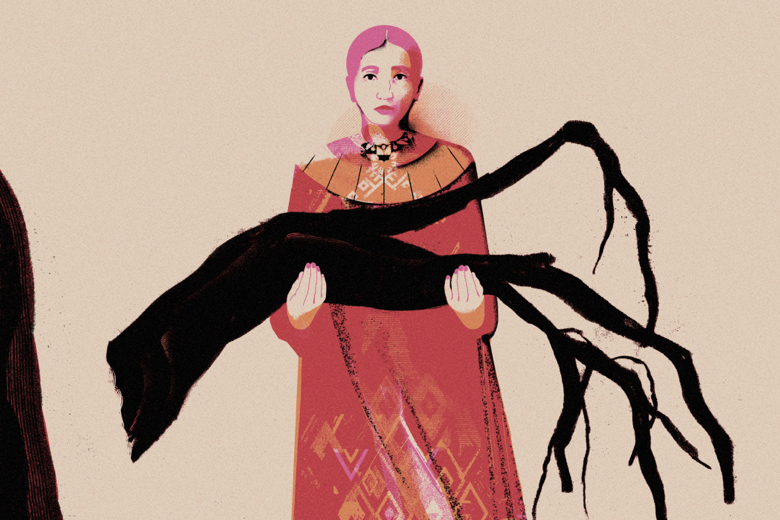
To See Beyond
Recalling histories of imperial collapse, Anna Badkhen wonders how we come to terms with the world we have made and how to make space for hope and sanctuary.
